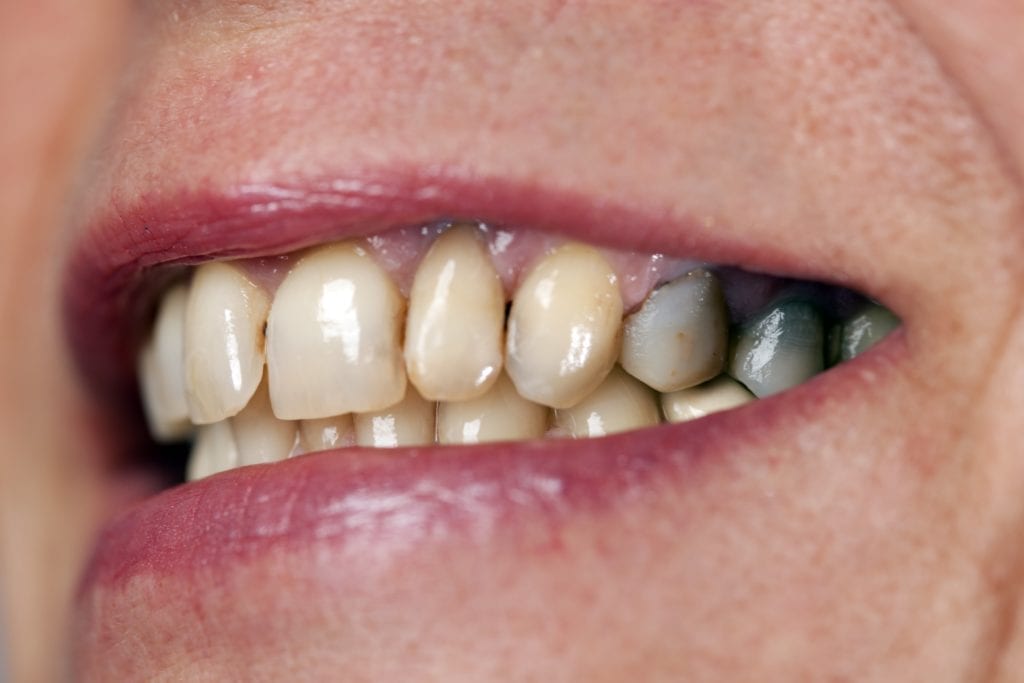Did you know that you should replace metal fillings? Metal fillings, such as amalgam and gold fillings, were a popular restoration choice starting from the 1800s all the way up until composite fillings were developed in the 1960s. Like their name suggests, amalgam fillings are an amalgamation of metals such as tin, copper, silver, and mercury, while gold fillings are generally composed of gold, copper, and other possible metals.
Despite the fact that composite fillings were developed in the 1960s as an alternative to metal fillings, many dentists still continued to use metal fillings. This is why they are still around today. However, since composite fillings have more benefits than metal fillings, more modern dentists are recommending that people replace their metal fillings with composite. Here is why you should have your metal fillings replaced:
They Contain Mercury
Metal fillings are made by mixing a powder of tin, copper, and silver alloys together with liquid mercury. Mercury is an essential ingredient in metal fillings because it acts as the binding agent to hold everything together and give metal fillings their durability. However, there is some debate as to whether or not mercury in dental fillings is safe. While it is said to be safe for the majority of the population, metal fillings containing mercury are not recommended for children under the age of 6, those with kidney problems or neurological conditions, and women who are pregnant or plan on becoming pregnant.
They React to Temperature Changes
Some metals, like mercury, change shape slightly in response to temperature changes. In fact, mercury is so reactive to temperature changes that it is used in thermometers. While this is ideal for having an accurate thermometer, it is not ideal for a dental filling. Metal fillings tend to expand when exposed to heat and contract when exposed to cold. This means that heat can cause pressure to be exerted on the tooth, while cold can cause small gaps to form along the perimeter of the filling.
They Stain Teeth

Anyone who has worked with metal knows that it corrodes over time. While metal fillings have a protective coating to slow down corrosion, this coating will eventually wear down after years of chewing. As the metal corrodes, it turns darker in color and can soak into the enamel, making it a grey or blue color. Metal fillings can also stain the gums and cause something known as an amalgam tattoo.
They are Not Aesthetic
Not only do metal fillings have the potential to stain both your teeth and gums, but they are also not aesthetically pleasing even when they’re not corroded. This is because they are made entirely out of metal and have a metallic appearance. The metallic appearance is a stark contrast to tooth enamel, meaning that metal fillings will always be noticeable.
They Compromise Tooth Structure

The first few steps to placing any type of dental filling is to remove the damaged or decayed tissue and then shape the area to accommodate a dental filling. After the damaged or decayed tissue has been removed, the shaping often requires the removal of some healthy enamel. Certain dental materials require more enamel to be removed, such as metal fillings. However, removing more healthy enamel compromises the tooth’s natural structure and strength. In some cases, this can weaken the tooth and lead to future damage.

Dr. Admar holds dual certificates — a Bachelor of Dental Surgery (BDS) in 2010 from India and a Doctor of Dental Surgery (DDS) in 2014 from Canada. He is now a full time practicing dentist in Kamloops where he provides a variety of services. Dr. Admar spends hundreds of hours in continued dental education to stay up to date in cosmetic and implant dentistry and he has achieved several advanced qualifications.


